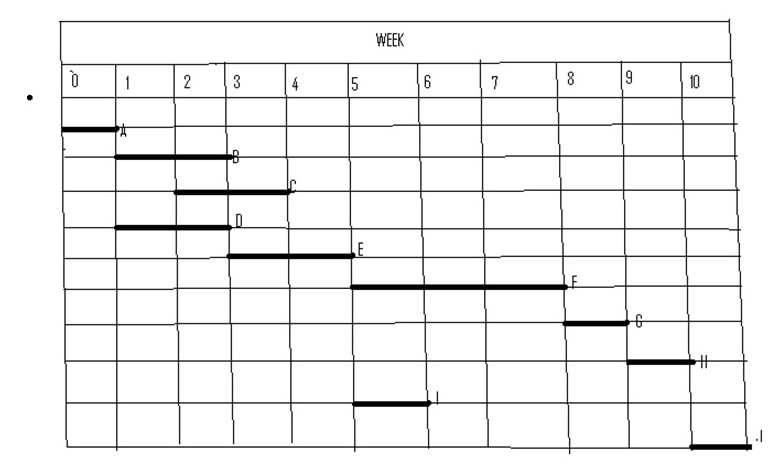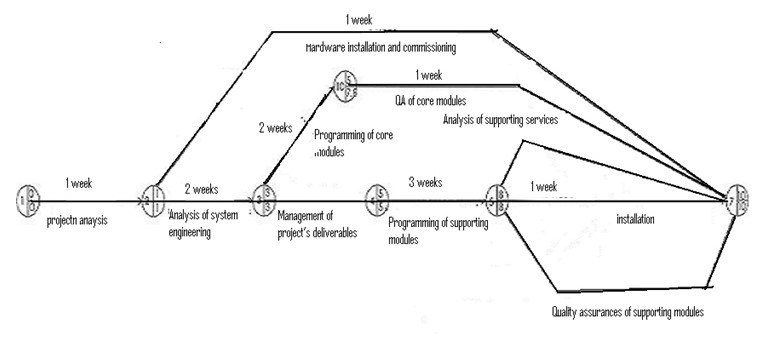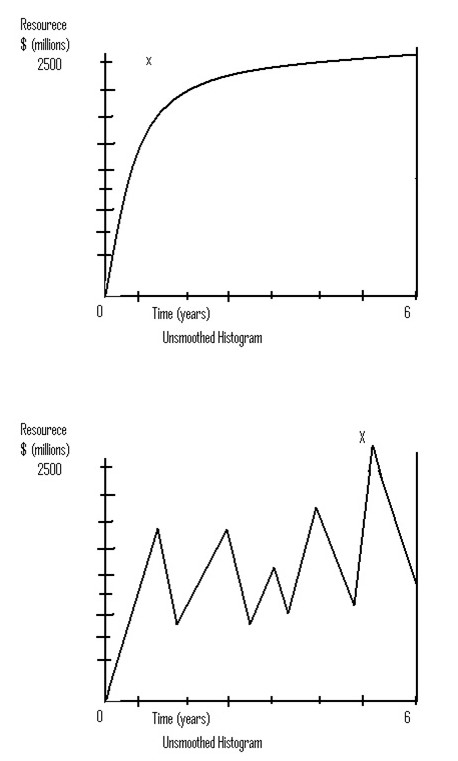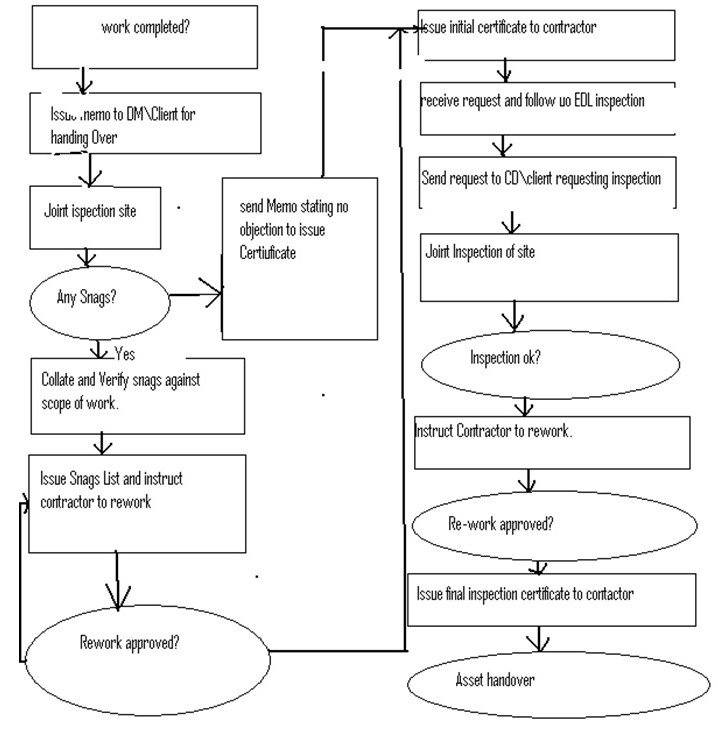Introduction and background information
The construction of a computerized sewerage system within the municipality of Bedford town is one of the most innovative approaches to quality infrastructure and environmental improvement projects. The ability to effectively monitor our sewerage system with the application of high-tech technology signals concerted efforts to improve our environment. The $188,000 design and construction will run for a period of 14 construction weeks and a concession period of 12 years.
The quality of air in and around Bedford Municipality has been poor due to pollution from a number of sources. These include dangerous emissions from manufacturing companies, motor vehicles and petrochemical industries. The daily concentrations of these pollutants depend primarily on the weather conditions. While Bedford’s number of motor vehicles has increased rapidly in the recent decades, improvements in the fuel standards have led to a general decline in the overall effect this could have had on the environment. Recent research reveals that in a week, approximately 75% of Nitrogen oxides (NOx) that constitute the unsteady 50% Volatile Organic Hydrocarbons (VOHs), an overwhelming 91% of the ozone degrader carbon monoxide (CO), and particulates in the air are as a result of waste products from motor vehicles.
The improvement of important infrastructure such as this is geared towards environmental improvement as well. Motor vehicles still remain the most convenient mode of transport in South Africa and their usage is estimated to have increased significantly over the last ten years. Improvement of this infrastructure is expected to provide the conditions for smother driving that reduces the instances of excessive and unnecessary accelerations and decelerations. The central benefit of this infrastructure improvement is the consequent reduction of fuel consumption and improvement of air quality in South Africa’s major ports and suburbs.
Pre-project plan
Objectives and scope
The improvement of the environmental conditions remains central to the achievement and sustenance of the major ports’ short and long-term development goals. The impact of the proposed project is to enhance the ability of Bedford’s environmental management authorities to improve the existing urban environmental conditions. Towards this, public health and the resultant quality of life are raised through the reduction in the inhalation of polluted air. This is a major source of a number of health conditions that negatively contribute to low life expectancy.
The objectives of the project include the improvement of the general public quality health around Bedford from 60% to 80% by the year 2012.
Start-up process
The process of bringing the resources and tools needed for the completion of the project is done to ensure the smooth execution of the activities that surround the life of the project.
These important steps include:
- Baselining of the overall project plan with clear management mandate
- Resource commitment by the executing agency
- Development of project database
- Kick-off meeting to jump-start the project
The development of a start-up checklist that indicates the status of each item is done. This includes the verification of whether an item has been addressed and duly complimented. The Bedford Municipality’s project start-up process has taken into consideration the thorough process of item verification, address and certification.
Project brief
As the important part of this crucial project, the construction company is expected to construct a sewerage system that will address the problem of monitoring the town’s drainage system. Taken into consideration in the development of this project is the aspect of urban design and landscaping solutions. This is towards the necessary creation and maintenance of the natural environment that this project seeks to enhance. The successful deliverance of the Bedford sewerage project will be proven on practices that are based on environmentally friendly and sustainable practices. The constructor will seek to protect and preserve the existing natural environment during the project activities. The involvement of the surrounding communities through one-to-one consultations and suggestions participations will provide the statistics and data on the attitude and views of the communities as regards the development of the project and its progress.
Project definition
“The correct and complete definition of all reasonably foreseeable elements of a proposed project is the single most important element of the CEQA compliance process” (Haughey, 2000).
Environmental Improvement Program (EIP) is the process where effective identification and implementation of the old systems of project undertakings are re-organized. The important tools used in the definition Bedford sewerage project include the Code of Ordinances, capital improvement planning, programs, studies, monitoring and tracking system, and a finance plan. “The capital improvement component of the EIP identifies physical project needs related to the adopted thresholds while other needs are identified as continuing programs, which typically require resources beyond a physical improvement project or require a long period of time to implement, and studies that are needed to improve knowledge regarding threshold attainment” (Haughey, 2000).
Project organization
“The success of an organization depends partly on its structure (the way in which tasks and responsibilities are formally allocated among its members) and partly on its management process (the way in which decisions are taken within the existing structure)” (Loosemore, Raftery & Reilly, 2006). Project planners agree that two central factors that affect the choice of the project organization include the project area and the project’s level of economic development. This project is a large project that demands an exceptionally trained professional staff to manage it to its successful completion. This is because its objectives are vast and thus embrace other sets of activities.
This project calls for an integrated management and organization approach because of many actors at play and a number of activities that complement each other to achieve the project’s goals and objectives. In addition to that, the project organization must take the responsibility to avail the necessary alternative infrastructure during the development of the prime project.
Stakeholders
“For successful projects, it’s not enough to deliver on the customer’s demand; projects have to meet all stakeholder expectations” (National Research Council (U.S.), Committee for Oversight and Assessment of U.S. & Department of Energy Project Management, 2005). Appropriate identification of Identifying stakeholders in project management forms a fundamental aspect in decision-making processes before, during, and after the implementation and after the successful completion of the project. According to Royer (2001) “identification of stakeholder is a primary task because all the important decisions during the initiation, planning and execution stages of the project are made by these stakeholders”. There are a number of stakeholders that actively take part in project management. These include the project manager, the project team, the functional management, the sponsor, and the customer.
In the analysis of comparatively larger projects, anyone who makes any notable contribution towards the achievements of the results of project forms part of the stakeholder. This is due to the fact that the contributions brought forward by stakeholder’s form part of fundamental reasons on decision-making processes as regards the project management. It is, therefore, necessary to effectively appreciate the role of stakeholders in the eventual achievement of the set goals and objectives.
The role of stakeholders in the development and execution of the project’s plans and activities cannot be underestimated. During the development of this project, a number of stakeholders were effectively consulted and will still be available for support in the ongoing development of the project. These stakeholders include:
- The general public that constitute community leaders, nongovernmental organizations, and civil societies that understand better the local existence and the diverse needs of the people
- Local Elected representatives of the people such as councilors.
- The local Environmental and Water management Authority.
Their contributions to the development of the project plan have created a better understanding of the people’s needs before and after the completion of the project.
Key stages
While there are more than 50 activities in this project, a detailed list of key stages includes:
- Analysis of the project
- Analysis of system engineering
- Hardware installation and commissioning
- Management of project’s deliverables
- Programming of core modules
- Programming of supporting modules
- Quality assurance of core modules
- Quality assurances of supporting modules
- Analysis of supporting services
- Installation
- Work breakdown structure
- According to Pace (2005),
There are three reasons to use a WBS in your projects. The first is that it helps more accurately and specifically define and organize the scope of the total project. The most common way this is done is by using a hierarchical tree structure. The second reason for using a WBS in your projects is to help with assigning responsibilities, resource allocation, monitoring the project, and controlling the project. The WBS makes the deliverables more precise and concrete so that the project team knows exactly what has to be accomplished within each deliverable. Finally, it allows you to double-check all the deliverables’ specifics with the stakeholders and makes sure nothing is missing or overlapping.
The development of the work breakdown structure for this project ensures that all the team members are taken into consideration and that each and every team member is fully committed and plays a positive contribution to the plan. It thus provides a very realistic time scale, provides details of resource requirements, creates an opportunity for early problems detection, appropriately validates the cost estimate of the project, and detects areas of wastes and spillages.
A table of planning activities
Network Diagram

Gantt Chart

Critical Path Analysis
Activity Immediate Predecessor Estimated Duration
A
B A 1
C B 2
D A,B 2
E C,D 2
F E 3
G F 1
H G 1
I E 1
J H 1

These are histogram diagrams showing the relationship between time and resource allocation. At point x, the project is at its steady level and thus no major activity is expected still the end of the project.

Project costings
Activity Cost per week crash cost
A £ 20,000 £30,000
B £18,000 £27,000
C £ 15,000 £25,000
D £20,000 £ 30,000
E £25,000 £35,000
F £20,000 £30,000
G £10,000 £15,000
H £15,000 £22,000
I £30,000 £40,000
J £20,000 £30,000
Total £188,000 £284,000
New cost of the project
Costing to crash per period = (Crash cost–Normal Cost) (Normal time –Crash time)
(284,000–188,000)/(10– 0.7)
96, 0000/9.3
£10,323
New Cost = £188,000 + 10,323
£198,323
The rise in the new project would be due to due early completion by five days. This was due to the additional for the crashing. This justifies the reason for the increase in the cost of the project by £10, 323.
“A well-structured cost estimate can become unmanageable after the third or fourth what-if iteration unless each change is meticulously documented and even by knowing this fact well, experienced cost estimators are constantly reminded of it when trying to reconstruct or explain cost estimates that were prepared some months or years back” (Meyer, 2002).
Project handing over
The process of project handover to the client is often not as simple as it looks. A number of factors and procedures must be followed before the contractor is given a final certificate of work completion. This is because the client must effectively learn the basics of how to maintain the project in perfect condition.
Other considerations and activities that are part of the handing over process include the finalization of any unresolved issues in the development of the project. This takes into consideration the unresolved items that exist between the client and the contractor. In this project, unresolved issues that may require finalizations may include final settlements of the workers’ dues, official clearance by environmental management authority in regard to the observance of the environmental conservation, and the handover of any asset that belongs to the development partners or the client. Below is a sketch of a detailed handover procedure as illustrated by (Blair, 2007),

The next is the clear and concise demonstration of benefits of this project to the stakeholders. According Baldwin, Rose-Anderssen, Ridgway, Allen, Lopez, Strathern, and Varga, (2006) “An organized, efficient and effective transfer of information from project works to Facilities Management (FM) and Infrastructure Services (IS) Units of the client is essential in that the transfer of ownership of the project from contractor to client can have an affect on health & safety, reliability, standards of operation, maintenance and cost efficiencies in handling and maintenance of the project in future”.
As a rule, in the handover of a project, a meeting is held between the client and the contractor on the handing over process and requirements. This meeting will be best held less than four weeks before the proposed completion date. The project manager will be charged with the responsibility of organizing the meeting with all stakeholders. All related licenses that include certification licenses and other vital workmanship documentation are best provided prior to the taking of the project. The contractor then takes an active role in the training of the client on the maintenance of the project.
References
Baldwin, J.S., Rose-Anderssen, C., Ridgway, K., A llen, P.M., L opez, A.,Strathern, M., and Varga, L. (2006). Management Decision-Making: Risk Reduction Through Simulation. Web.
Barkley, B. (2004). Project risk management. McGraw-Hill Professional.
Blair, G.M. (2007). Planning a Project. Web.
Haughey, D. (2000). Planning a Project using a Work Breakdown Structure & Logic Network. Web.
Loosemore, M, Raftery, J. and Reilly, C. (2006). Risk management in projects. Taylor & Francis.
Meyer, B.C. (2002). Project Costs and Crashing. Web.
National Research Council (U.S.), Committee for Oversight and Assessment of U.S. and Department of Energy Project Management (2005). The Owner’s Role in Project Risk Management. National Academies Press.
Pace, B. (2005). Center for Environmental Improvement. Web.
Royer, P.S. (2001). Project risk management: a proactive approach. Management Concepts.
